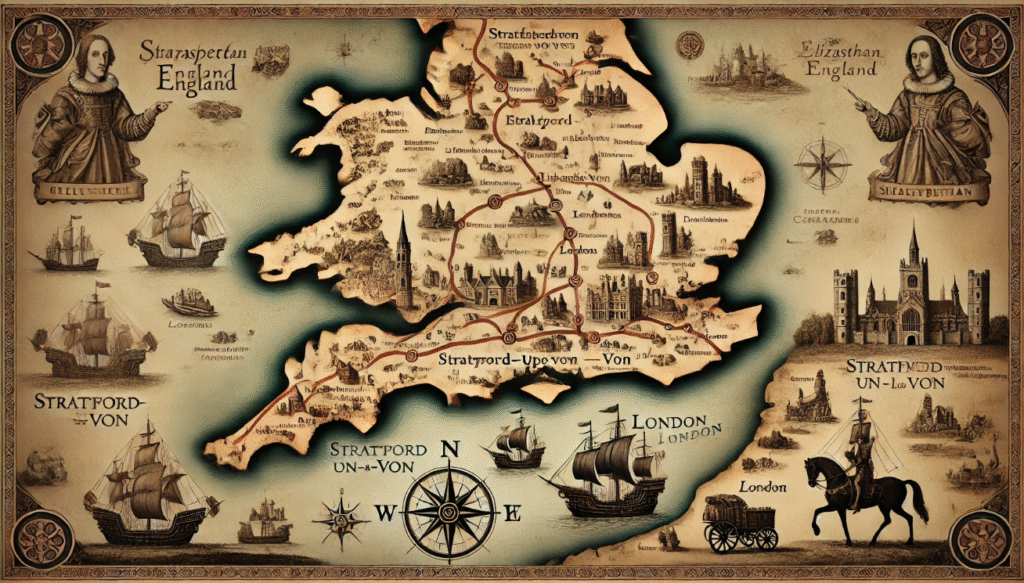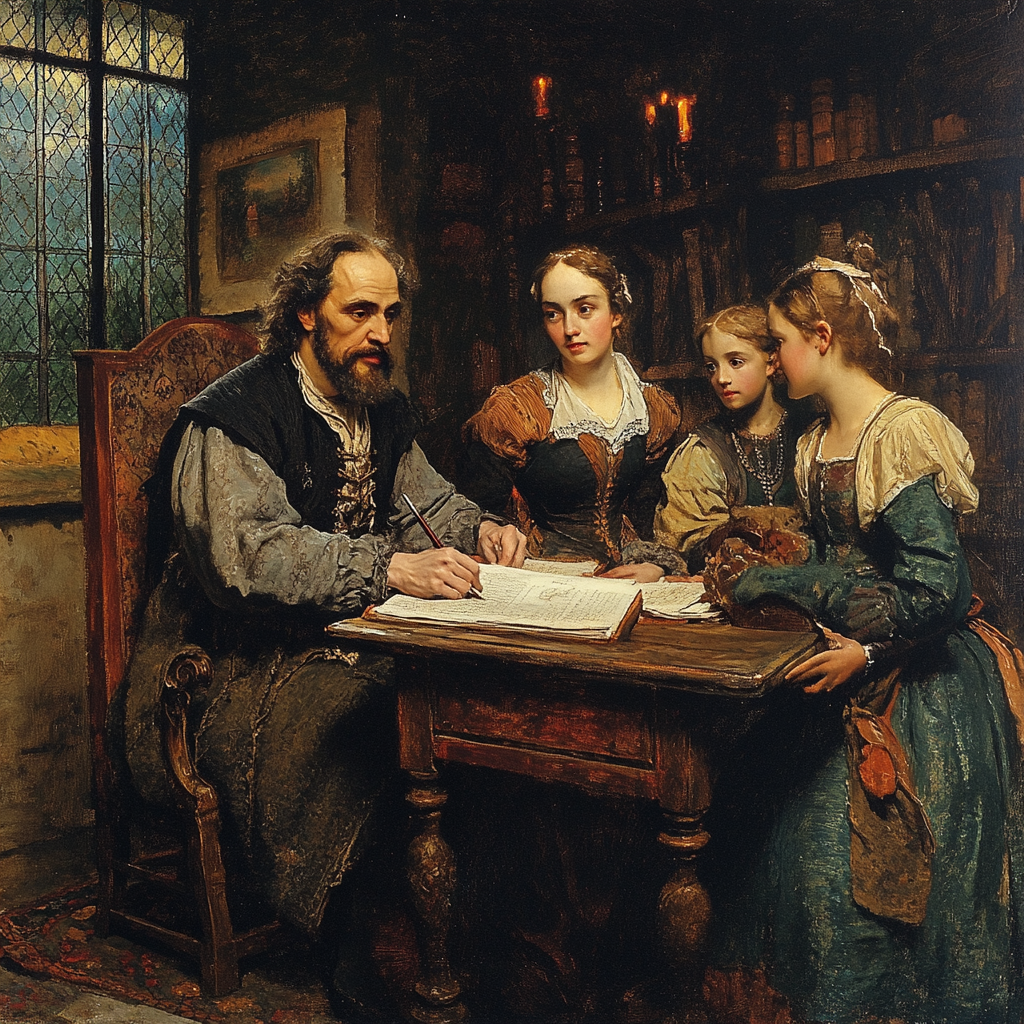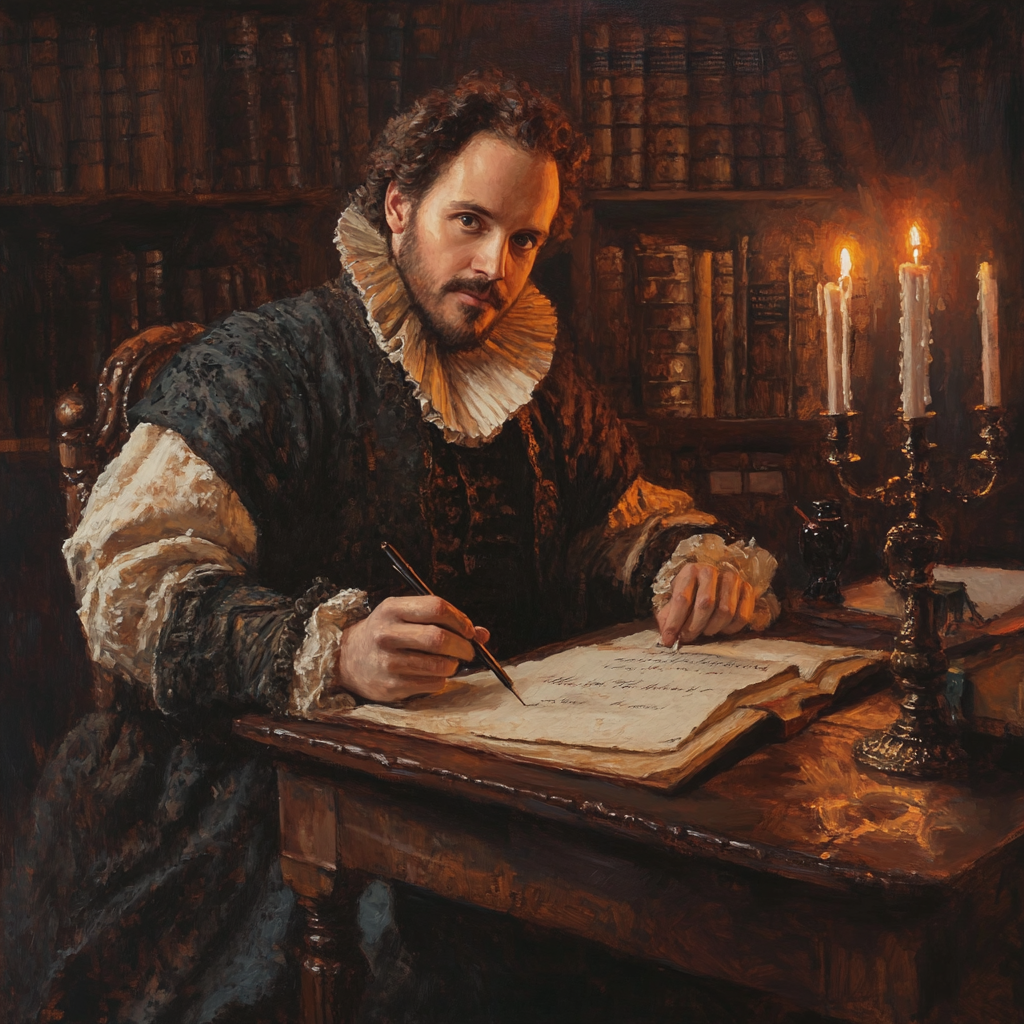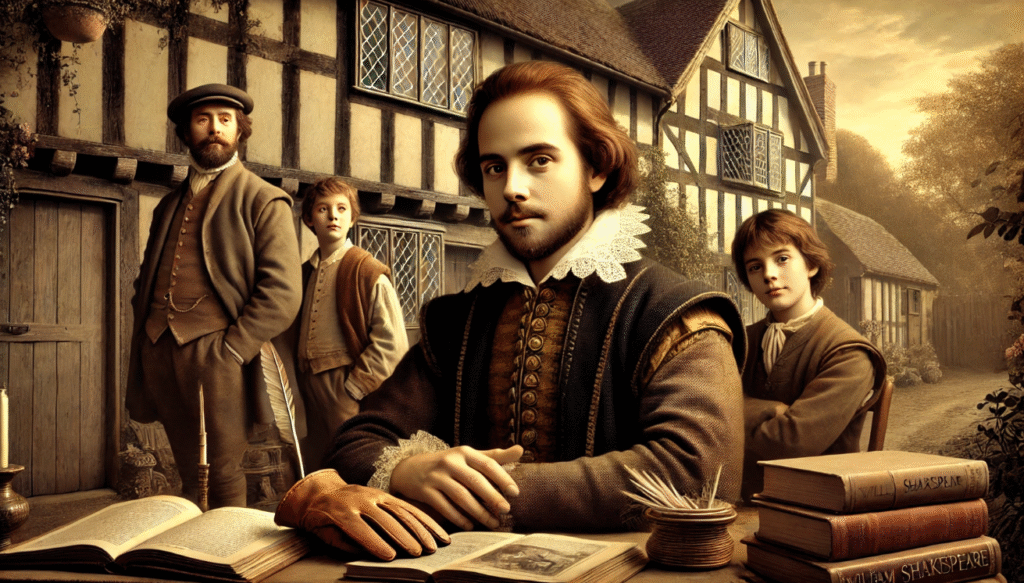William Shakespeare, often hailed as the greatest playwright and poet in the English language, continues to captivate audiences and scholars alike centuries after his death. Despite the lack of concrete information about his life, his literary genius is undeniable. In this article, we will delve into the mystery and fascination surrounding Shakespeare’s life and the places he might have traveled, whether physically or through his vivid imagination. We will explore how these travels, both literal and metaphorical, played a significant role in shaping his iconic works.
Shakespeare’s Real-Life Travels

The Limited Records of Shakespeare’s Movements
Shakespeare was born in Stratford-upon-Avon in 1564 and spent most of his early life there. He moved to London in the late 1580s to pursue a career in the theater and became a successful playwright and actor. However, tracking his exact physical journeys between the two locations is challenging due to the scarce historical records available. We know that he maintained ties to both places throughout his life, but the specifics of his travel between them remain somewhat elusive.
Theories About Shakespeare’s Travels
There is ongoing debate among scholars about whether Shakespeare actually traveled to foreign countries like Italy or France. Some believe that his detailed and accurate descriptions of these locations in his plays suggest first-hand experience, while others argue that his knowledge could have come from extensive research and secondhand accounts. While there is no definitive evidence to prove one way or the other, it is widely accepted that Shakespeare had a deep understanding of foreign settings, whether from personal travel or other sources.

Elizabethan Travel Context
Travel during the Elizabethan era was quite limited and challenging due to factors such as poor road conditions, lack of reliable transportation, and the presence of highwaymen and bandits. Most people traveled by foot or on horseback, and long-distance travel was typically reserved for those with the means to afford it. Common destinations for travel during this time included major cities such as London, as well as popular pilgrimage sites like Canterbury. Cultural exchanges also occurred through the trading of goods and ideas between England and other European countries, as well as through the exchange of literature and music. Additionally, the Elizabethan era saw a rise in exploration and colonization, with expeditions to the New World and the Far East leading to new cultural exchanges and influences.
Shakespeare’s Imaginative Travels in His Works
Foreign Settings in Shakespeare’s Plays

Plays set in foreign locations, such as Romeo and Juliet in Verona, Othello in Venice, and The Tempest on a remote island, often provide audiences with a unique and immersive experience. These settings allow for the exploration of different cultures, customs, and landscapes, adding depth and richness to the storytelling. Through these plays, audiences can gain insight into the complexities of human relationships, the impact of societal norms, and the power dynamics at play in unfamiliar environments. The foreign locations serve as integral elements in shaping the characters and the overall narrative, offering a captivating and enlightening theatrical experience.
Shakespeare was able to capture the essence of various places in his plays through his exceptional ability to research and imagine the details of these locations. Despite likely never visiting these places, Shakespeare extensively studied maps, books, and accounts of travelers to accurately depict the settings in his plays. Through his vivid descriptions and rich language, he was able to transport audiences to these places and bring them to life on the stage. Shakespeare’s keen insight and creativity allowed him to effectively capture the essence of these locations, making his works timeless and universally relatable.
Influence of Travel Literature
Travel literature played a significant role in shaping Shakespeare’s depiction of foreign lands in Elizabethan England. During this time, there was a growing interest in exploration and discovery, and travel accounts provided detailed descriptions of exotic lands, cultures, and customs. Shakespeare would have drawn inspiration from these accounts to create the settings and characters in his plays. Some possible sources that Shakespeare may have referenced for geographical and cultural details include the writings of explorers such as Sir Walter Raleigh, Thomas Hariot, and Richard Hakluyt, who documented their travels to the New World and other distant lands. Additionally, translated works of ancient travel writers such as Marco Polo and Sir John Mandeville would have provided Shakespeare with valuable insights into foreign lands and peoples.

Symbolism and Metaphorical Journeys
Shakespeare’s plays often explore the theme of journeys in various forms, including self-discovery, exile, and transformation. In “The Tempest,” the characters undergo a physical and emotional journey as they navigate the island and their own internal struggles. Similarly, “As You Like It” features characters who embark on a journey of self-discovery and transformation as they navigate the Forest of Arden. These journeys serve as a means for the characters to explore their own identities, confront their inner conflicts, and ultimately grow and evolve as individuals. Shakespeare’s exploration of journeys in his plays provides a rich and nuanced portrayal of the human experience and the various paths we take in life.
Shakespeare’s Time Travel Through Historical and Mythological Worlds
Historical Settings in His Plays
Shakespeare’s ability to transport audiences to different historical periods is truly remarkable. Through his masterful use of language, vivid imagery, and intricate storytelling, Shakespeare creates an immersive experience that allows audiences to feel as though they are actually living in the time period of his plays. Whether it’s the political intrigue of Julius Caesar or the epic battles of Henry V, Shakespeare’s works continue to captivate audiences and transport them to different historical periods with incredible depth and authenticity.
Mythological and Imagined Worlds
Plays that delve into mythological or fantastical settings often provide audiences with an engaging and immersive experience. These works typically incorporate elements of ancient folklore, legends, and supernatural beings, allowing for an exploration of human nature and universal themes. A classic example is William Shakespeare’s “A Midsummer Night’s Dream,” which features a magical forest inhabited by fairies and mischievous spirits. Through the use of these fantastical elements, the play delves into themes of love, illusion, and the unpredictability of human emotions. By creating a rich and otherworldly setting, these plays offer a unique perspective on the human experience and allow for a deeper exploration of complex emotions and relationships.
Shakespeare was a master at blending reality and fantasy to create otherworldly journeys in his plays. He often incorporated supernatural elements, such as witches and fairies, into his works to transport audiences to magical realms. This blending of the real and the fantastical allowed Shakespeare to explore complex themes and emotions in a way that resonated with both his contemporaries and modern audiences. His ability to weave together the mundane and the extraordinary continues to captivate and inspire audiences around the world.
How Shakespeare’s Travels Continue Today

Global Reach of Shakespeare’s Work
Shakespeare’s stories have had a profound impact on global culture and have been adapted in various languages and cultures around the world. His plays have been translated into numerous languages, allowing people from different backgrounds to experience and appreciate his timeless themes and characters. Additionally, Shakespeare’s works have been adapted into various forms such as films, ballets, operas, and even graphic novels, further expanding their reach and influence. This widespread adaptation and appreciation of Shakespeare’s stories demonstrate their enduring relevance and appeal across different societies and time periods.
Modern adaptations and performances in diverse cultural contexts are becoming increasingly prevalent in today’s global society. For example, in the world of theater, there are numerous productions that re-imagine classic plays and stories within the context of different cultures. This can involve changing the setting, language, and cultural elements to create a fresh and relevant interpretation for a new audience. In the realm of music, artists are incorporating diverse cultural influences into their work, blending traditional sounds and instruments with contemporary styles to create innovative and unique compositions. This fusion of different cultural elements not only enriches the art form but also promotes cross-cultural understanding and appreciation.
Tourism and Pilgrimage to Shakespearean Sites
Stratford-upon-Avon and the Globe Theatre are modern hubs for Shakespeare enthusiasts, offering a variety of experiences and activities for those interested in the playwright’s life and works. From visiting Shakespeare’s birthplace and exploring the historical town of Stratford-upon-Avon to attending performances at the Globe Theatre, there are plenty of opportunities to immerse oneself in the world of Shakespeare. These places also host events, workshops, and educational programs, making them popular destinations for fans of the Bard.
The connection between these sites and the idea of following Shakespeare’s imagined travels lies in the historical and literary significance of the locations. By visiting these sites, individuals can gain a better understanding of the places that inspired Shakespeare’s works and the cultural and societal context in which he lived. This can provide valuable insights into the settings and themes of his plays, allowing for a deeper appreciation of his writing and the world in which he lived. Additionally, following Shakespeare’s imagined travels can offer a unique and enriching travel experience, allowing individuals to explore both the physical landscapes and the literary legacy of one of the world’s most renowned playwrights.
The Enduring Legacy of Shakespeare’s Travels
Shakespeare’s Universal Appeal
His imaginative journeys resonate with audiences across time and space because of the timelessness of his themes, characters, and settings. The universal emotions and experiences portrayed in his work make it relatable to people from different cultures and time periods. Whether it’s the struggle for self-discovery, the quest for justice, or the exploration of fantastical worlds, these themes speak to the human condition in a way that transcends cultural and temporal boundaries. As a result, his imaginative journeys continue to captivate and inspire audiences around the world, regardless of when or where they are experiencing it.













